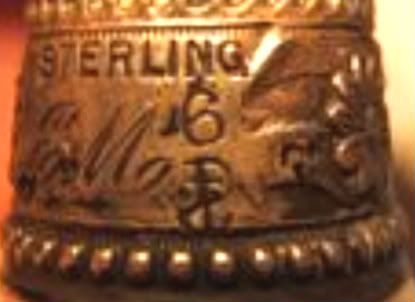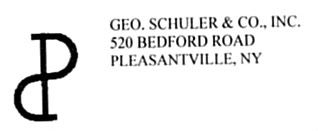I have been out of action for some time so apologies for a very late contribution to this thread. The mark - known as the "fouled anchor" - on the thimble above is that of Stern Brothers of Philadelphia. The figure 6 is a US size number. The anchor mark dates the thimble to 1890 - 1908. The company used two other marks (SBC and GSC) pictured below during its history (1890-1933). It became Goldsmith, Stern & Co in 1913 until it folded in 1933.
At the moment I can only find a silver with gold band and two 10K gold thimbles (the latter marked under the tops) to illustrate the progression of marks. The thimbles are also marked with size numbers - 8, 8 and 10 respectively.

Here's a brief history of the company:
In 1868, the firm of Stern Brothers was established in Philadelphia. Within a few years, the company expanded and relocated to New York City and entered the diamond and jewellery manufacturing business. From 1890, Stern Brothers used a "fouled anchor" (an anchor entwined with a rope) as their thimble trademark. From the period 1908-1912, the company sometimes used an "S" as its trademark with a "B" in the upper curve and a "C" in the lower curve of the "S". From 1913, the company used a squared "G" with an "S" and a "C" inside after August Goldsmith became a partner. The company shut down and ceased operations in 1933 following the stock market crash of 1929.
On dating Stern Brothers thimbles, Gay Ann Rogers in her book, "American Silver Thimbles" (Haggerston Press, London, 1989) states, "The anchor is significant only when it appears alone. This tends to designate thimbles made from the 1890s to the early 1900s. Later the anchor was stamped in addition to the initials of the company, or, after 1908, the company initials alone were sometimes stamped on the thimble. These are not hard and fast rules, however, and exceptions can be found."
Regards/carling
.






